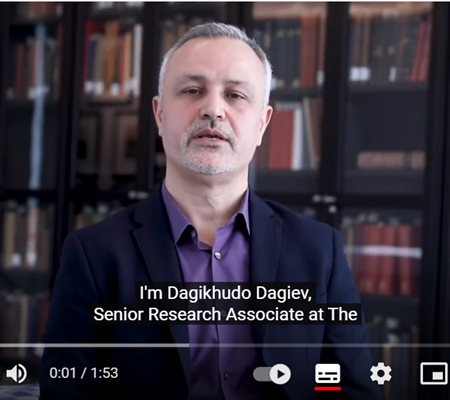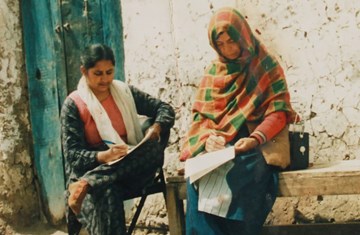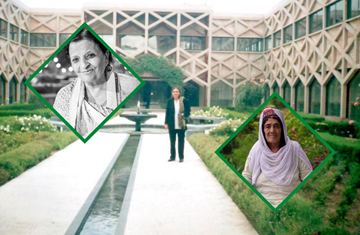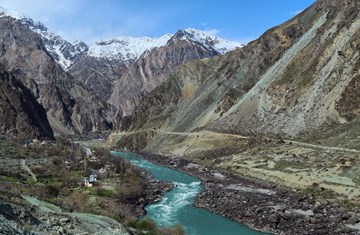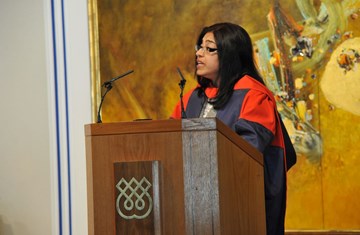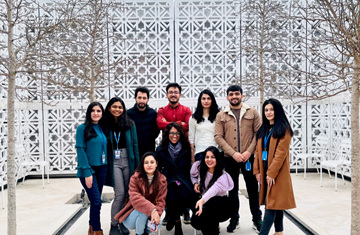Interview with Dr Dagikhudo Dagiev on Central Asian Ismailis
Dr Dagikhudo Dagiev is the author of the IIS’s most recent book—and first Open Access title—Central Asian Ismailis: An Annotated Bibliography of Russian, Tajik and Other Sources. In this interview, he reveals how he hopes the book will open up new ground in the study of the Ismailis of Central Asia.
What can readers expect from the book?
The book is one of the first comprehensive studies of the history of the Ismailis of Central Asia in the English language and covers Ismaili daʿwa and daʿi activities in the region. The most significant aspect of the book is that it not only deals with the study of the history of the Ismailis of Central Asia but it is also a bibliographical study, which focuses primarily on Ismaili literature produced by Russian, Soviet and post-Soviet scholars in the region. The bibliographic study focuses primarily on written materials produced by Russian scholars from the era of the expansion of Russian imperial rule in Central Asia (then known as Turkestan) in the mid-nineteenth century to the period after 1917, and the work of Soviet and post-Soviet scholars. It also includes other studies on Nasir-i Khusraw and the Ismailis of Central Asia. The book aims to show the trajectory of the development of Ismaili studies in the regions under Russian influence.
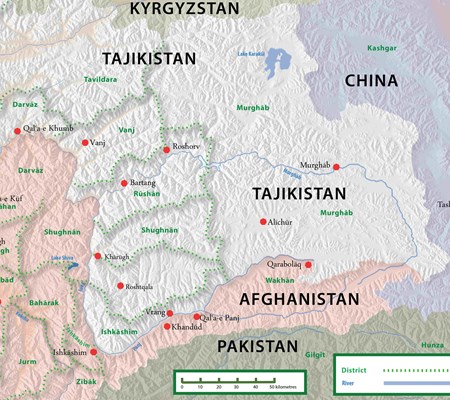
Map of Badakhshan.
Please can you tell us about the book’s origins? What led you to write on this topic?
The book project was born as a result of a few discussions that I had with a very dear colleague, Kutub Kassam, who unfortunately passed away a few years ago. During these discussions we talked about the distinguishing role played by Nasir-i Khusraw in the spread of the Ismaili daʿwa in what is now known as Central Asia, and later Russian occupation of the region and the life of the Ismailis under Soviet/Communist rule. His suggestion was that most of these studies, including recorded materials, reports, published and unpublished scholarly works, were produced in two phases: under the Russian imperial and then the Soviet Communist rules. These were mainly written in Russian and Tajik Cyrillic alphabet, hence not accessible to a wider audience, and particularly to Western scholarship. So, the book originated with the intention of making them accessible to scholars, students and those who are interested to know and learn about Russian and Soviet studies on the Ismailis of Central Asia. The project was then discussed and elaborated on with Dr Farhad Daftary, Co-Director of the IIS. The idea of a book project about Central Asian Ismailis and an annotated bibliography of Russian, Soviet and post-Soviet scholars, which included other studies as well, was very well received by Dr Daftary, who provided his full support.
Please can you tell us about the compilation of the annotated bibliography and its significance?
Understandably, the most challenging aspect of this project was the identification and accessing of all the material, including published books and articles, recorded materials, unpublished manuscripts, theses, and documents mainly by Russian, Soviet and post-Soviet scholars on the Ismailis of Central Asia, a field on which relatively little has been published in the West. I conducted two field studies in Tajikistan and also obtained some of the materials through the assistance of friends and colleagues from Tajikistan, Uzbekistan and Russian libraries and archives, as well as the large collection of many of these materials in the library at the Aga Khan Centre. In total, over 700 entries have been identified and annotated in the study.
In what way is the book significant for Ismaili studies and broader scholarship on Islam?
This is one of the first ever comprehensive studies about the Ismailis of Central Asia. The annotated bibliography includes almost every study regarding the Ismailis of Central Asia and Nasir-i Khusraw that has been produced by Russian, Soviet and post-Soviet scholars. It will help scholars and students and those who have an interest in the subject to instantly identify relevant materials relating to various aspects of the life of the Ismailis of Central Asia. In addition, the comprehensive survey and rich bibliography aim to illuminate the history and historiography of the Ismailis in Central Asia in particular, but Muslims of Central Asia in general, and facilitate and advance further study on the subject by experts around the world.
Why is this book significant for Central Asian Ismailis in particular?
Even though there have been some smaller studies about the Ismailis of Central Asia and Nasir-i Khusraw, no comprehensive study dealing with the history of the Ismailis of Central Asia and the particular role played by Nasir-i Khusraw has been produced. In particular, this volume for the first time deals specifically with the three phases of the development of Ismaili studies: the period of expansion of Russian imperial rule; later development under Soviet/Communist rule; and post-Soviet studies. Moreover, an analysis of the poetry and religious literature demonstrates that, despite living in a hostile environment, surrounded by a Sunni majority, and governed by autocratic rulers—and being generally isolated from the outside world in the remote high Pamir mountains—the Ismaili community were still well aware of the Persian literature tradition and its main themes such as love, beauty, ethics, religion and philosophy. They were also able to maintain their religious traditions and beliefs, passing them down through the generations over centuries.
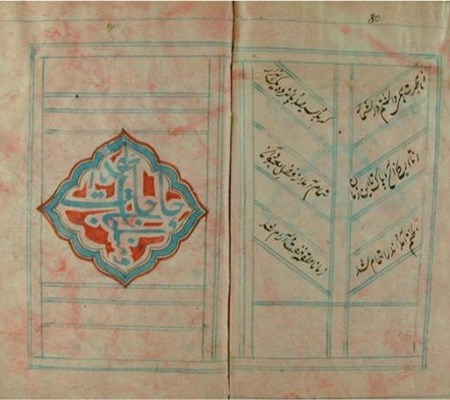
Hājat va Munājāt-i Mubārak-i Wakhānī.
How would you like to see your book used?
I would like to see the book used by scholars and students alike; Ismaili community members might also benefit from it. Experts on the religious history of the region in connection to the Ismailis of Central Asia and their neighbouring constituencies might find it a useful basis for their research. In general, the book might appeal to individuals interested in Central Asian history, including Russian, Soviet and post-Soviet scholarship on Islam.

